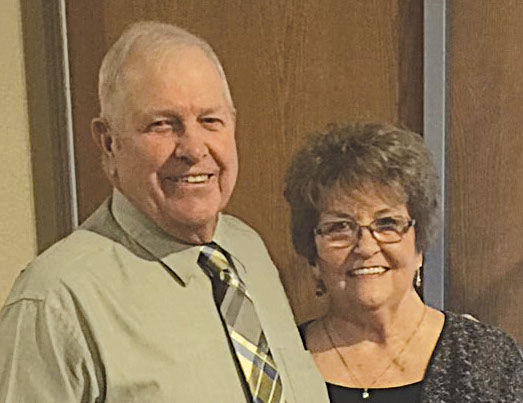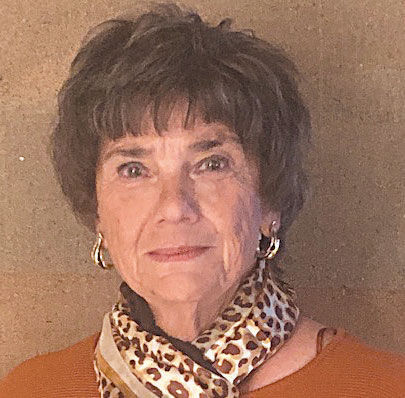Hospice can help family members prepare for last good-bye
- Emily Woodham

- May 10, 2023
- 7 min read
The following story appeared in the May 10 Idaho Catholic Register.

Kathryn and Bob Sewell
By Emily Woodham
Staff Writer
COTTONWOOD – Eileen Uhlenkott, a parishioner of the Tri-Parish Community in Cottonwood, believes hospice care for a death at home is the best way to leave this life.
Her experience of being with her mother, Kathryn Sewell during her death in 2010, prompted Eileen to become a hospice volunteer. When her father, Bob, passed away in 2014, she also stayed by his side, holding his hand until he breathed his last.
“I felt that I just couldn’t be in the position of getting a phone call and hearing that one of them had passed away. I wanted to be with them,” she said.
More Americans are choosing to die at home with hospice care, instead of in a hospital or another medical facility. A study released in 2019 by the New England Journal of Medicine stated that the trend to die at home rose steadily in the early 2000s. Deaths at homes increased from 23.8 percent in 2003 to 30.7 percent in 2017, while deaths in hospitals and nursing facilities declined. By 2017, the percentage of deaths at home had risen to percentages similar to more than 50 years ago. “Home has surpassed the hospital as the most common place of death in the United States for the first time since the early 20th century,” the study stated.
When Uhlenkott’s mother had been in the hospital and was nearing the end of her life, the doctors told family that she could go to a transitional facility or go home to die. The choice was clear, Uhlenkott said. “She wanted to be home. We chose hospice.”
Uhlenkott’s parents had lived active lives on their ranch on the Salmon River, about two miles across the river from the tiny town of Lucile. They married in 1940 and raised their four children on a ranch near the 120-year-old homestead of Eileen’s great-grand-father. But just a few years before her death, Uhlenkott’s mother moved with her father to Oregon.

Bill and Eileen Uhlenkott
Her mother lived a little over a week with hospice care before she passed away. She was 88, and her death was just a few months shy of her 70th wedding anniversary.
“We could see the days drawing to a close, because her alertness was not there. She’d just sleep,” she said. Uhlenkott, one of her brothers and a cousin took turns caring for Kathryn. All family members had a chance to be with her individually and in groups, she said. “My mother said that she was always afraid she would die alone. So my dad just slept in the chair beside her.”
When her mother was alert, Uhlenkott took the opportunity to find out what her mother wanted for her funeral. Although her mother was not Catholic, she asked that her grandson (Uhlenkott’s son, Father Ben Uhlenkott, now pastor at Risen Christ Parish in Boise) preside over her funeral.
“Everybody should either write down their last wishes, or have a discussion with family members to tell them what they want done,” she said. Sharing last wishes before dying helps family members avoid disagreements in the stress of grief, she said.
At some points, her mother would be at peace with her death, confident that she would be in a better place. “One day, though, she said to my husband Bill, ‘I didn’t think it would be so hard to leave this old world.’ ”
As her mother’s breathing slowed down, a family member let Uhlenkott and others know it was time to gather close to her bedside. “I saw her take her last breath,” she said.
Uhlenkott’s experience with her mother was so beautiful and meaningful that a friend suggested she volunteer with Syringa Hospice in Grangeville. Her husband, Bill, also became a volunteer.
Experience with dad was different than mom
The timing was providential, because not long after her mother’s death, Uhlenkott’s oldest brother died suddenly in 2012. Then in 2014, her father was diagnosed with advanced cancer. He lived for 14 days after the diagnosis, and his last days were slightly more active than her mother’s. He would sleep for long periods, and then be alert, but not realize where he was or what was happening.
“I would just play along with him. I didn’t try and correct him,” she said. One time, she said, he had a sudden burst of energy and insisted on finding his horse and riding it. Uhlenkott was able to convince him to agree to let one of her nephews drive him around for a bit in a four-wheeler to distract him. He then calmly went back to his room.
“He wasn’t confused all the time, just a few days off and on,” she said. When someone is dying, she has found it best to go along with their version of reality, as long as it isn’t doing them any harm.
Uhlenkott laid down next to her father during his final night and held his hand until he died. “I knew he had gone because his hand slipped out of mine,” she said.
Although it was difficult to say goodbye to her parents, Uhlenkott is grateful for the time and conversations she had with them in hospice, she said. She and Bill continue to support hospice, volunteering to help families and assist with fundraisers. A favorite project of Uhlenkott’s is helping make commemorative Christmas ornaments for hospice families.
Eileen and Bill Uhlenkott frequently volunteer to sit with patients so that family caregivers can have some rest. However, there are other needs that volunteers can meet, including bringing meals or baked goods. Hospice will provide training to any who wants to volunteer. Volunteers are taught the signs of death and protocols when visiting a home.
Volunteers critical for hospice care
Volunteers are always needed in hospice care, said Diane Rutherford, parish nurse at St. Pius X Parish in Coeur d’Alene. Rutherford was a hospice nurse for 12 years before she retired. “Working in hospice was very rewarding,” she said.

Rutherford believes more people would call hospice sooner to prepare for death if they understood how much support hospice offers. Too often, she said, people wait until their loved one has only a few days left. With the support
of hospice, families can have an easier time preparing for death at home, instead of trying to coordinate everything by themselves.
“My philosophy is that there’s not a right or wrong way to die,” Rutherford said. “But, I do think there is a good and a bad way to die. I think that the good way to die is with your family around and lots of support and love, and being empowered to do as much as you can until you can’t do any more,” she said.
Many people are not aware that hospice can also provide emotional support and education to family members of those who are dying, Rutherford said. For example, hospice staff can help families resolve conflicts over decisions by moderating discussions, giving a chance for everyone to be heard.
Hospice helps prepare family members to support their loved one who is dying, by explaining what happens as the body shuts down.
“I think when people understand what is going on during death, they feel like they’re more in control and that helps them relax a little bit,” she said.
For example, understanding the differences in breathing, the changes in color of the skin, and the inability to eat or drink can help family members know that death is coming and to be prepared, she said.
Just as Eileen Uhlenkott experienced with her parents, there are signs of death that are common to everyone, but there are also aspects of death that are unique to each person, Rutherford said. Some people have very peaceful transitions; others lose track of reality or fight death. Families find it helpful to be able to ask a hospice nurse for advice when something unexpected comes along.
Hospice volunteers give family caregivers an opportunity to rest and take care of themselves, which is essential, Rutherford said. Caregivers need to have someone with whom they can share their emotions. “A caregiver has so many fears and anxieties. They need to talk about these fears and be reassured,” she said.
Sometimes family members refuse to accept the imminent death of a loved one. This lack of acceptance can become a source of stress for the one who is dying, she said. “Most people who know they are getting toward the end of life don’t want others to tell them they’re going to get better. They want to face it head-on,” she said.
Patients don’t always want to share what they are thinking or feeling with family members, especially if they are worried about how their family members will respond to or process the information. “A benefit of hospice is having someone with the patient who isn’t connected so emotionally to the family,” thus allowing the patient more opportunity to be honest about his or her feelings, and even vent frustrations, if needed, Rutherford said.
Talking about death and dying in general helps people come to terms with it, she said. “When we accept that death is a part of life, it helps make death more peaceful.”
Most areas will have hospice organizations that you can find through web-based searches or by contacting your local parish or hospital. Your regional Health and Welfare Department office may also be able to provide referrals to hospice organizations.
If you enjoyed this story and would like to read more like it, please consider buying a subscription to the Idaho Catholic Register. Your $20 yearly subscription also supports the work of the Diocese of Boise Communications Department, which includes not only the newspaper, but this website, social media posts and videos. You can subscribe here, or through your parish, or send a check to 1501 S. Federal Way, Boise, ID, 83705: or call 208-350-7554 to leave a credit card payment. Thank you, and God bless you.


Comments